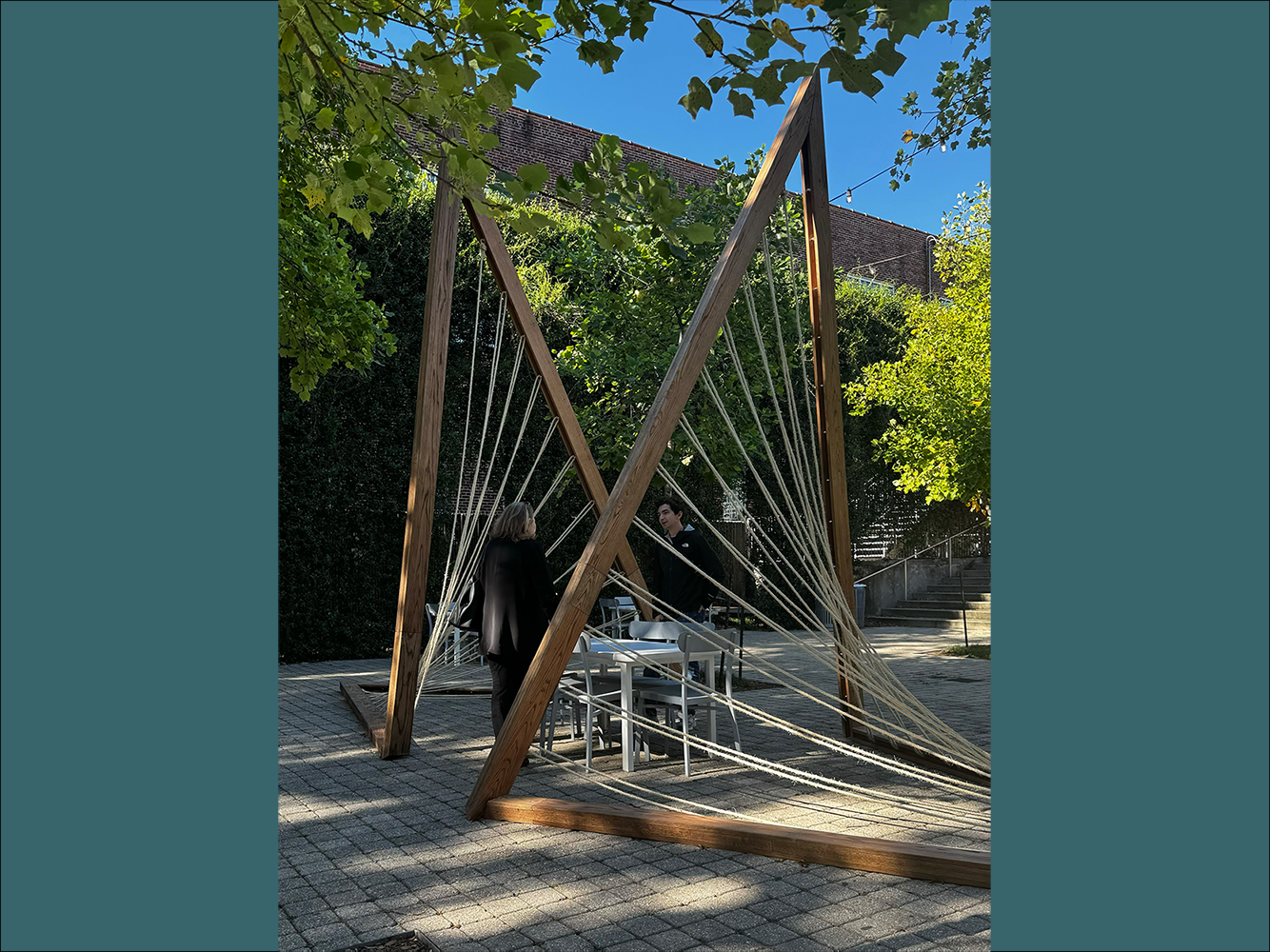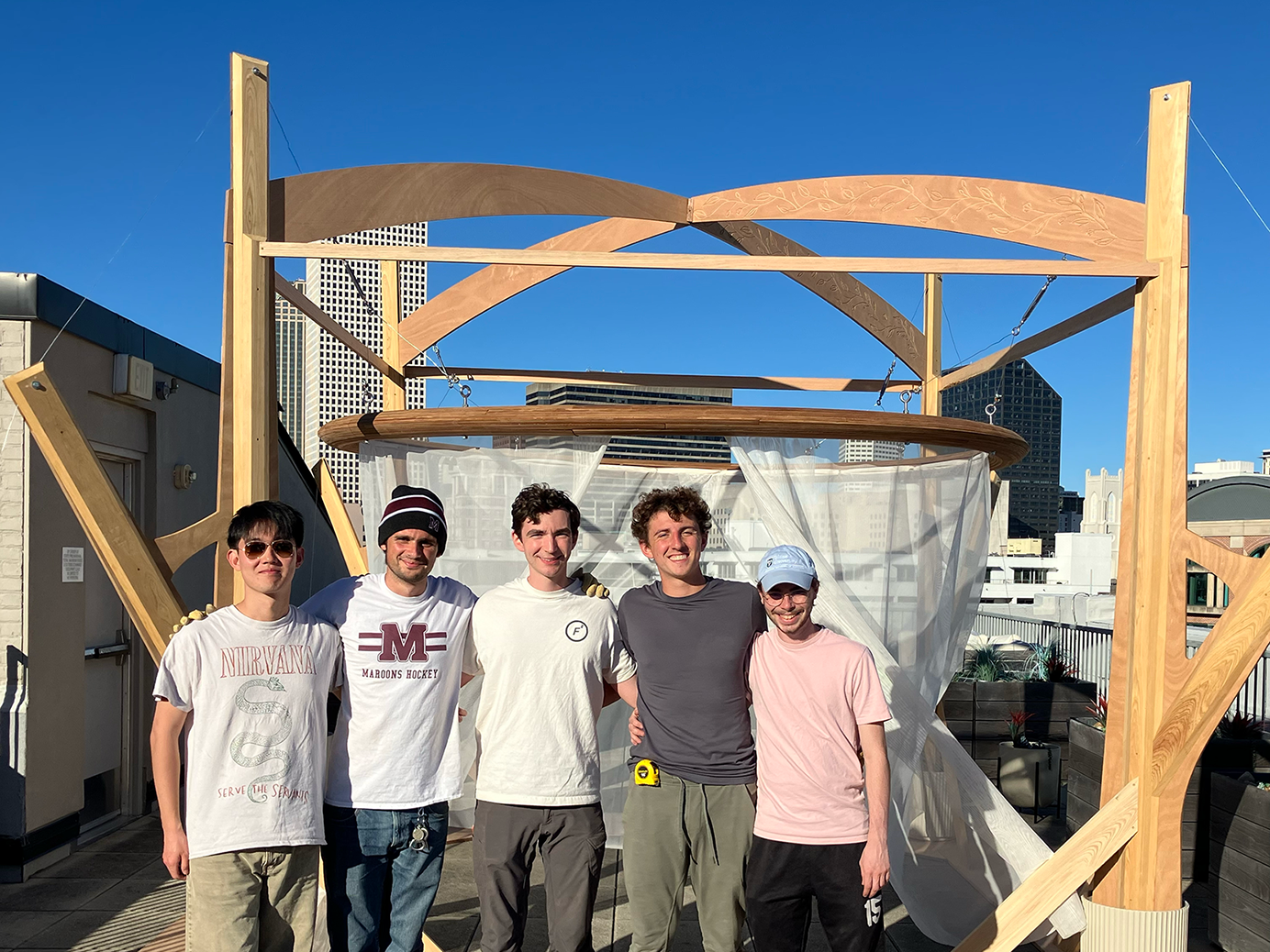Architecture students add sculpture to annual Sukkah Build
For 15 years, students in the Tulane University School of Architecture have designed and built a sukkah, a temporary open-air structure under which those marking the week-long Jewish holiday of Sukkot celebrate.
It has typically been erected in Pocket Park on Tulane’s uptown campus, providing students, staff and faculty — whether Jewish or not — a place to enjoy meals or just socialize during the fall harvest festival.
For the 16th annual Sukkah Build, students did something different, forming two teams to bring the joy of Sukkot to both Tulane and the community. One team built the sukkah on the rooftop of the Museum of the Southern Jewish Experience (MSJE) on Howard Avenue, while the other built a complementary sculpture in Pocket Park.
"Through the structure and design of the sukkah we aim to explore the narrative of a human connection with nature for a holiday which celebrates and honors the harvest of crops.”
Cole Schwabacher, fifth-year architecture student
And while the Pocket Park construction is not a sukkah in the true sense, it does provide a space for dining and celebrating. “This year, we wanted to bring positive publicity to both the school and the museum, along with uniting people of different cultures under the same roof,” said Ronen Lavi, one of the project’s co-leaders.
Together, the two projects were funded by Tulane Hillel, MSJE, and the School of Architecture. “It’s one of the highlights of our year as far as student-driven programming goes,” said Gary Brandt, director of Tulane Hillel
“The group of students who participate is always diverse, and they are able to take ancient, often archaic language about the traditional sukkah construction constraints and iterate some of the most unique and beautiful designs."
The sculpture is inspired by the dove and olive branch, Jewish symbols for peace from the story of Noah’s Ark. The sculpture is made up of two parallelograms which have angled upward columns that create a wing shape. The parallelograms are leaning against each other for support and to replicate the wings of a dove. The columns are tied together with rope to strengthen the connection of the columns and to create feather-like imagery.
The sukkah focuses on themes of peace, with the tree of life as its main feature. The tree of life is a symbol of Jewish culture stemming from the Garden of Eden in the book of Genesis.
“It has many different meanings to a wide variety of people, some of which include the representation of the Torah while for others it represents how human life is connected with nature,” said Cole Schwabacher, a fifth-year architecture student. “Overall, through the structure and design of the sukkah we aim to explore the narrative of a human connection with nature for a holiday which celebrates and honors the harvest of crops.”
Schwabacher is in his third year of working on the Sukkah Build and is now the project’s leader along with Lavi and Sophia Atkins. He isn’t Jewish but loves both the holiday and the creativity that it allows.
“We have the freedom to push the envelope in terms of our design,” he said. “We can be very abstract as long as we’re following (Jewish) law. The project is very time consuming, and towards the end we’re working 9 to 5.”


